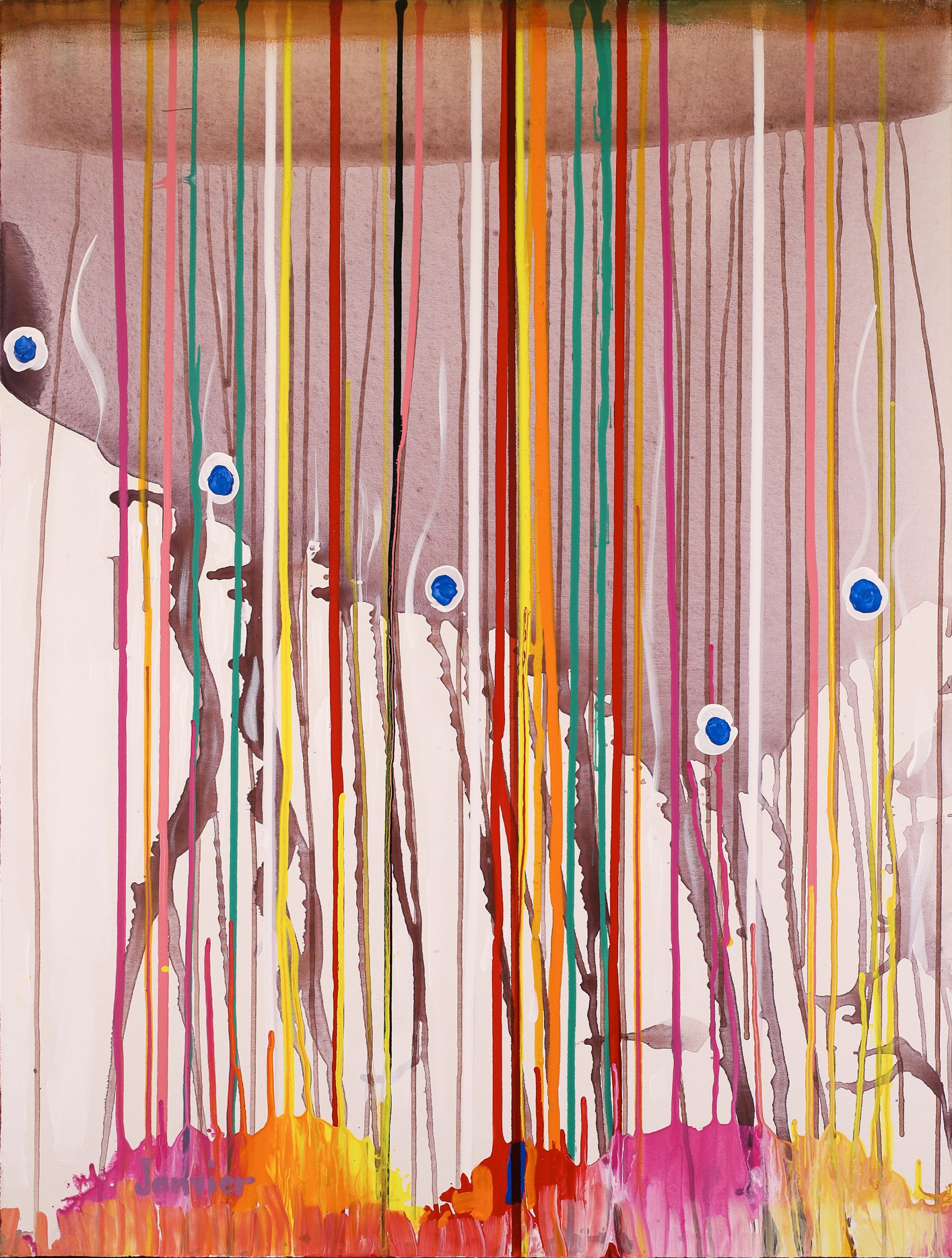

signed lower left; titled verso
Provenance: Acquired directly from the artist in Cold Lake AB
Alex Janvier began to create art instinctually as a young child, scratching pictures in the mud after a rain and cutting shapes from birch bark paper. As an adolescent, he was offered formal painting lessons at Blue Quills Residential School, though these were stifling lessons in reproduction rather than creation or expression of individuality and culture. While later studying art at the Alberta Institute of Technology and Art (now AU Arts), Janvier began to explore broader modernist influences, and was drawn to the works of European masters Paul Klee, Wassily Kandinsky and Joan Miró. Janvier’s first solo exhibition came just a few years after graduation, in 1964. While he is now highly recognized as a pioneering abstract Indigenous artist, Janvier once said: “Those who buy my works are basically brave” (Edmonton Journal, November 5, 1975), as his work fell outside the realm of what art collectors would have expected from an Indigenous artist. Janvier’s compositions and visual iconography draw from Indigenous handicraft and textile work – beadwork, basketry, hide-painting and, in this example, dress-making. Alex Janvier continued to explore self-expression, imagery and styles throughout his long and illustrious career.
Two similar examples to “Ribbon Country, White-Blue Beads” can be found on pages 213 and 214 of “Alex Janvier” (Greg a. Hill; National Gallery of Canada; 2016)
